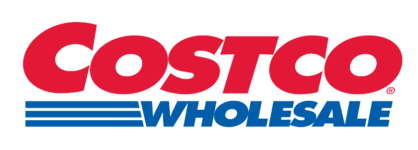
Understanding the Difference Between Cocoa Butter and Cacao Butter
Cocoa butter and cacao butter are terms often used interchangeably, leading to confusion among consumers. Both are derived from the same source—the Theobroma cacao plant—but their processing methods and applications can differ. In this article, we will explore the similarities and differences between cocoa butter and cacao butter, their uses, and health benefits.
Cocoa butter is a pure, stable fat extracted from cocoa beans. It is typically pale yellow and solid at room temperature, requiring melting before use. The extraction process begins with harvesting cocoa pods, after which the beans are fermented, dried, roasted, and ground into a paste known as cocoa liquor. This liquor is then pressed to separate the fat, resulting in cocoa butter, while the remaining solids are processed into cocoa powder.
Cocoa butter is widely recognized for its role in chocolate production, providing a smooth and silky texture to confections. Additionally, it is a popular ingredient in cosmetics, known for its moisturizing properties.
Cacao butter, often considered the raw counterpart of cocoa butter, is also derived from cocoa beans. The primary distinction lies in the processing—cacao butter is made from unroasted beans, preserving more of the natural nutrients. This process is carefully controlled to ensure that temperatures do not exceed 115°F (about 46°C), allowing it to retain its "raw" status.
Like cocoa butter, cacao butter is solid at room temperature and must be melted for culinary applications. It is also used in skincare products due to its nourishing properties.
While both types of butter have a mild chocolate aroma, cacao butter tends to have a more pronounced chocolate scent due to its raw nature. However, neither provides a strong chocolate flavor when used in recipes.
Both cocoa and cacao butter are rich in healthy fats, but cacao butter may offer additional health benefits due to its raw processing, which preserves more antioxidants. These fats are beneficial for muscle and brain health and can help keep you feeling satiated.
Both cocoa butter and cacao butter can be used in various culinary and cosmetic applications:
Both butters are commonly found in lotions, lip balms, and creams due to their emollient properties. They help soothe dry skin and provide a protective barrier.
In summary, while cocoa butter and cacao butter are derived from the same source and share many similarities, the key differences lie in their processing and nutrient profiles. Cacao butter is raw and retains more nutrients, while cocoa butter is typically roasted, affecting its flavor and health benefits. Understanding these distinctions can help you choose the right product for your culinary and skincare needs. Whether you're baking a decadent chocolate dessert or crafting a nourishing body balm, both butters offer unique benefits and applications.
Cocoa butter is made from roasted cocoa beans, while cacao butter is derived from raw, unroasted beans. This difference in processing affects their nutrient profiles and flavor, with cacao butter retaining more antioxidants and a stronger chocolate aroma.
While both butters can be used in baking and cooking, they cannot be substituted on a one-to-one basis for traditional butter due to their 100% fat content. Adjustments may be needed in recipes to achieve the desired texture.
Both butters are rich in healthy fats that support muscle and brain health. Cacao butter, due to its raw processing, may offer additional health benefits, including higher antioxidant levels, which can help keep you satiated.
Both butters are popular ingredients in lotions, lip balms, and creams due to their moisturizing and emollient properties. They help soothe dry skin and create a protective barrier, making them ideal for skincare products.

Raw Shea and Cocoa Butter Recipes: Nourish Your Skin Naturally
Cocoa butter and raw shea butter are two powerhouse ingredients known for their incredible moisturizing properties. Both butters are derived from natural sources and are rich in vitamins, antioxidants, and fatty acids, making them...

DIY Shea and Cocoa Butter Cream Recipe
Creating your own body cream at home can be a rewarding and nourishing experience for your skin. This article will guide you through a simple yet effective recipe for a luxurious shea and cocoa butter cream. Packed with moisturizi...

How Is Cocoa Butter Made? A Comprehensive Guide
Cocoa butter, also known as theobroma oil, is a pale-yellow edible fat extracted from the cocoa bean (Theobroma cacao). This versatile ingredient is widely used in chocolate production, cosmetics, and pharmaceuticals. In this arti...

Cocoa Butter vs. Shea Butter for Scars: Which is Better?
When it comes to skincare, particularly for scars, two natural products often come up in discussions: cocoa butter and shea butter. Both have been praised for their moisturizing properties and skin benefits, but they also have dis...
Ready to source an ingredient?
Whether you’re struggling to find the perfect ingredient, racing against the clock, or simply don’t have the bandwidth to manage sourcing — we’ve got your back.
Get a Free Sourcing AuditSavings is BIG but the relationship value is MASSIVE! Glad we met when we did. Looking forward to building this partnership with you and David.
Yohan, here to say you’re one of my favorite suppliers. Aside from your high quality ingredients, you’re so great to work with. Thanks for all the help you’ve given us this year.
Working with Global Savors and Yohan has been very smooth when sourcing ingredients. They offer a great selection and and cost savings! Yohan has been awesome to work with and we look forward to continuing business together.






Global Savors is your trusted partner for seamless ingredient sourcing, offering end-to-end solutions that streamline procurement, simplify logistics, and elevate your supply chain efficiency.
View More News
© 2025 Copyrights by Global Savors. All Rights Reserved

